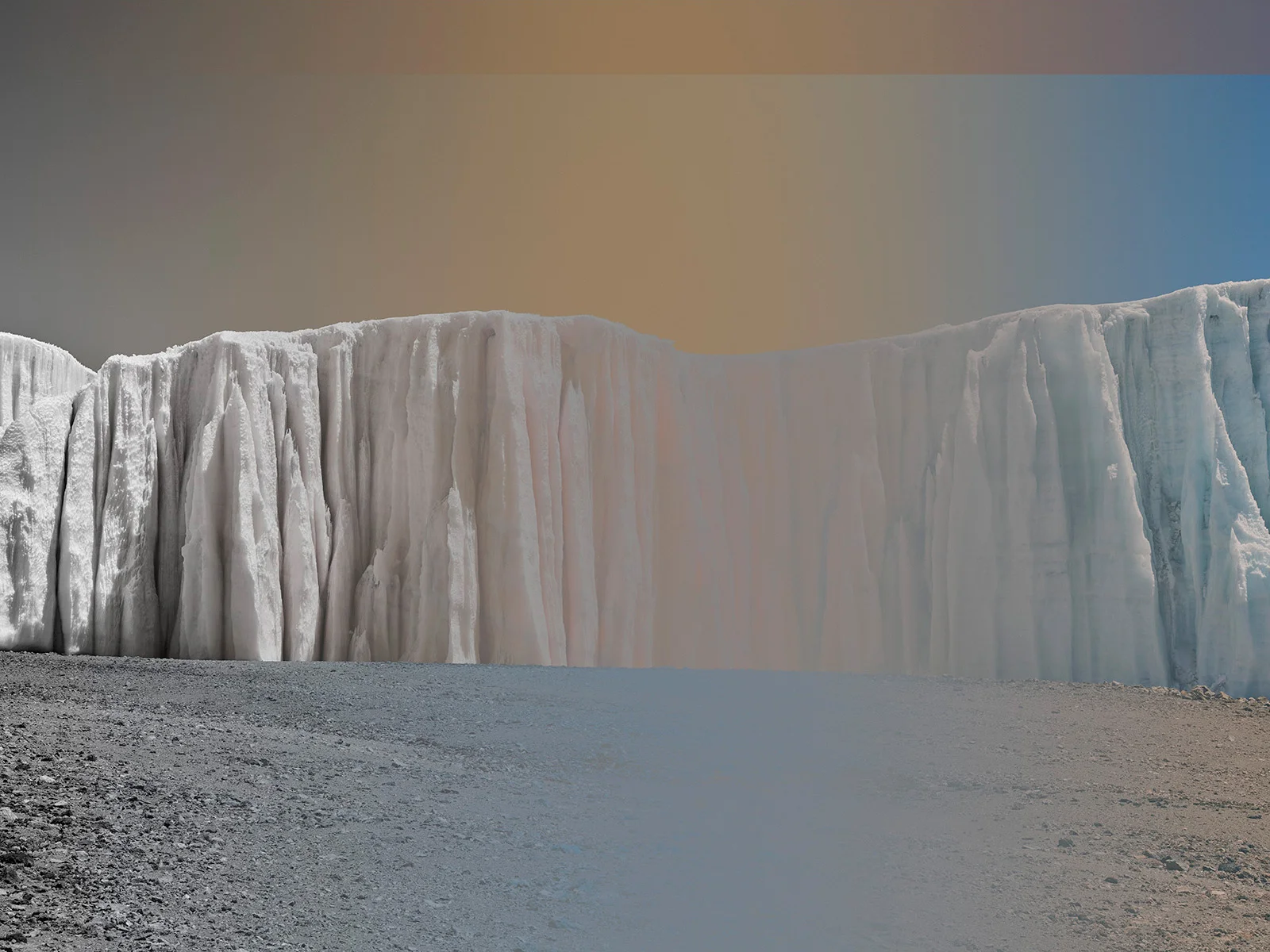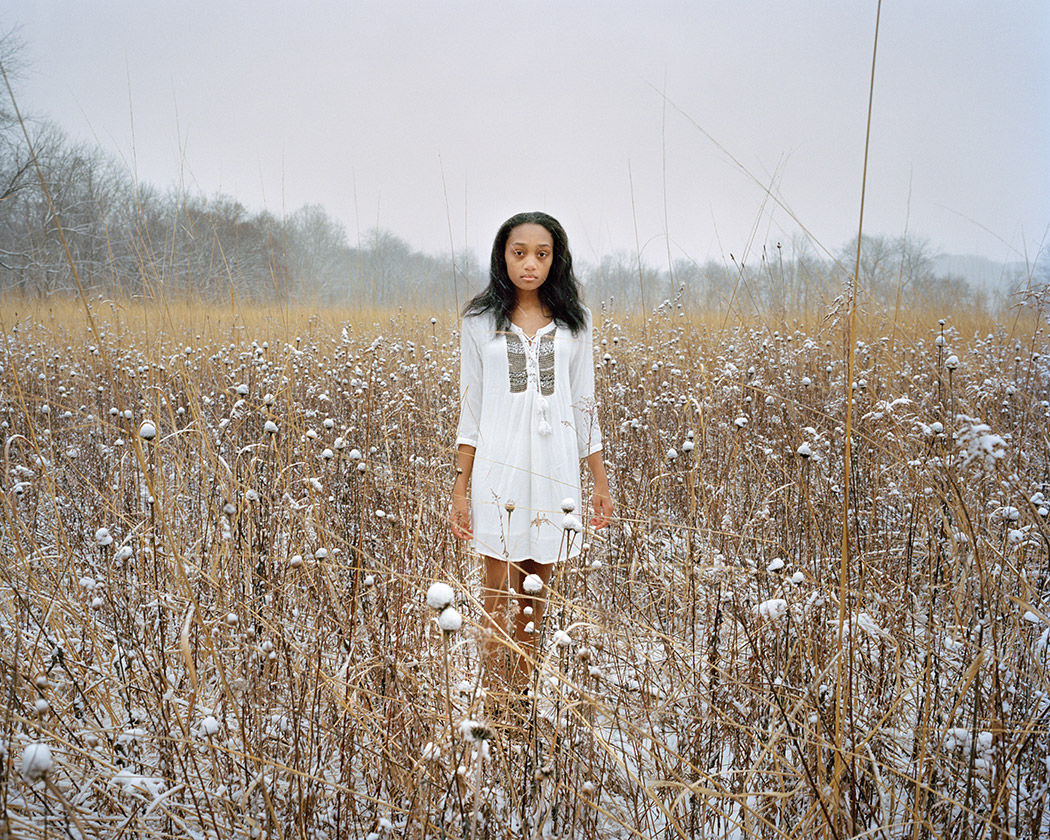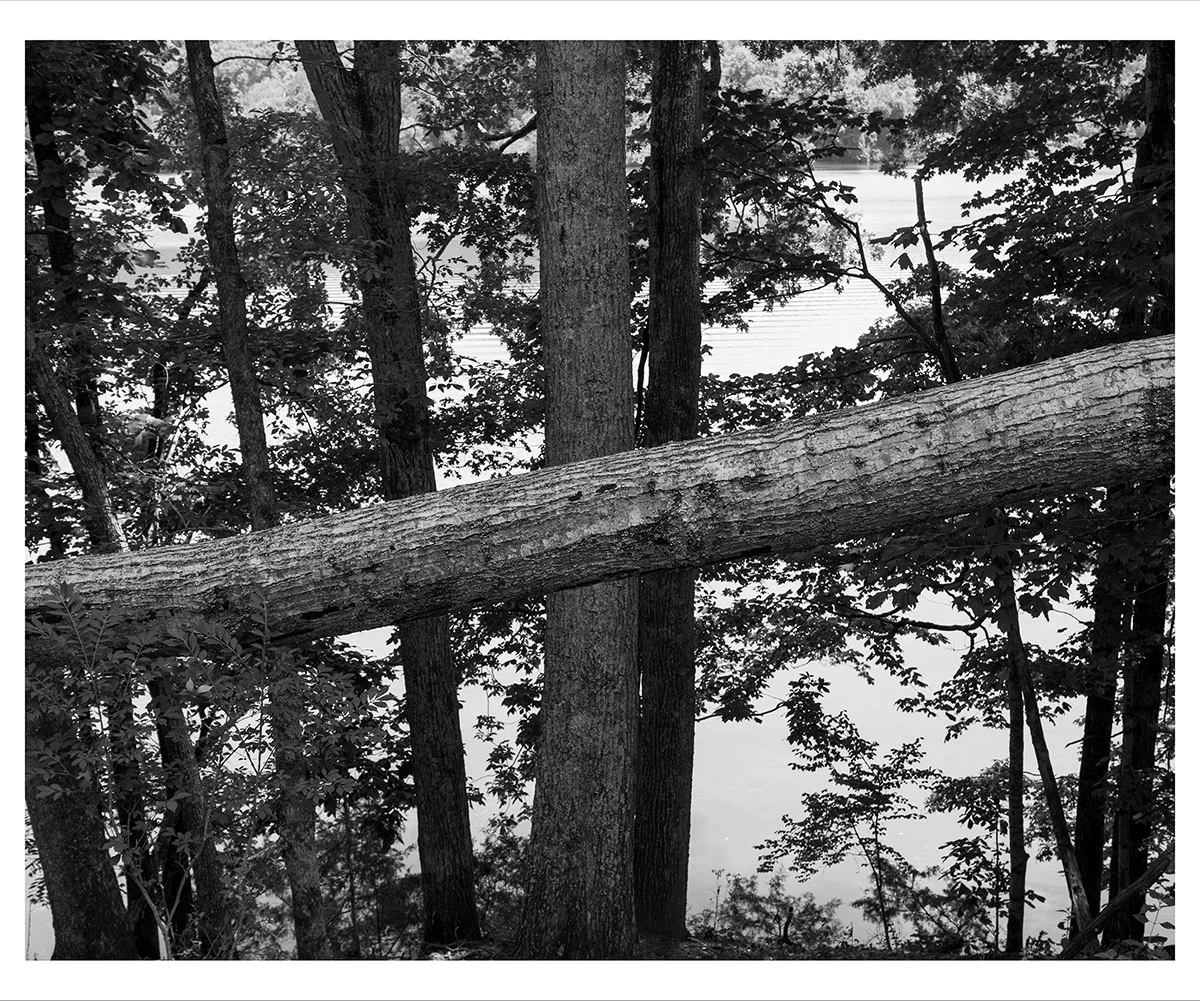© Rainia Matar. Wafaa and Sanaa, Bourj El Barajneh Refuge Camp, Beirut, Lebanon, 2017
Roula Seikaly speaks with Guggenheim's 2018 photography fellows about what drives them and what they plan to do with this prestigious award.
Life as a working artist is the definition of hustle. For those who live its day-to-day reality, it means carving time out of a busy routine that includes - in addition to life’s personal demands - teaching and/or endless side gigs in order to support a creative practice.
By this measure, unrestricted grants like those awarded by the John Simon Guggenheim Memorial Foundation are peerless opportunities. Of course, the official recognition of hard work is validating, but what may be more important is the gift of time it gives. We posed three questions to each of this year’s Guggenheim Photography Fellows and those who were able to participate replied with generous and detailed answers. In each answer, time and its central role in creativity is clear.
Congratulations to all!
Roula Seikaly in conversation with the 2018 Guggenheim photography fellows.
© Ian van Coller
Ian van Coller
South African-born Ian van Coller’s body of work includes portraits, photo collage, and a vernacular study of Butte, Montana. Naturalists of the Long Now - which focuses on global warming and how it impacts glaciers and other terrestrial archives of deep time - captured the attention of Guggenheim award jurists. Naturalists… was inspired by the Long Now Foundation’s 10,000 Year Clock Project. van Coller’s goal is to challenge viewers to think in long time frames, and what humanity will face after 100 or 1,000 years if satisfying immediate material desires is our only pursuit.
Roula Seikaly: What’s exciting you about making art right now?
Ian van Coller: Since 2012, my practice has shifted to focus on making artist books rather than
pursuing exhibitions. These books have become larger and larger with my most recent one opening to 38” x 50.” I have become obsessed with making these massive, finely crafted books and try to produce one new book per year. I see the books as an elegiac record/memorial to the things we are losing due to climate change, as well as giving viewers entry into a landscape they might not otherwise get to experience.
The process of making the books has allowed me to meet and interact with scientists working in paleoclimatology. In another life, I would have loved to have been an ornithologist. The project I am working on for the Guggenheim - Naturalists of the Long Now - is, in a way, allowing me to become the scientist I wanted to be. It also facilitates scientists becoming artists. I am very excited about the interactions and conversations that happen around the collaborations with scientists for this project. I really enjoy the process of having them make their annotations directly onto my photographic prints. I have been amazed at how well each collaboration has turned out so far.
© Ian Van Coller
© Ian van Coller
Seikaly: What excites you about being a Fellow?
van Coller: I am excited to get to many of the remote locations that I need to continue Naturalists of the Long Now. My intent is to be exceptionally efficient with the grant money and get in a great deal of traveling over the course of the year. My Guggenheim year will take place from May 2019-May 2020. I plan to use the interim time to approach scientists that I hope to work with. The
cachet of a Guggenheim introduction will hopefully make more scientists willing to allow me to accompany them to their research sites. My college dean is also giving me a year leave of absence from teaching to work on the project. To have that amount of clear time to focus solely on this body of work is more than I could have dreamed. Receiving the Guggenheim Fellowship also feels like validation, that the work I am doing is important. More than anything, that feels really good.
Seikaly: What is the first thing you plan to do with the funding?
van Coller: I plan to buy a plane ticket to Baffin Island to collaborate with scientists from the
Institute of Alpine and Arctic Research.
Tsar Fedorsky
© Tsar Fedorsky. From the series The Light Under the Door
Tsar Fedorsky’s work centers on personal yet relatable narratives. The elegantly composed photographs comprising The Light Under the Door and Long Way Home reflect the artist’s effort to understand various emotional states - contentment, loneliness, or complacency. That personal work, as we know, is messy and often open-ended. As our individual and collective attention spans shrink, it’s sobering to think about Fedorsky’s work and the emphasis it places on the present moment.
Seikaly: What is the first thing you plan to do with the funding?
Tsar Fedorsky: Receiving the Guggenheim Fellowship is a wonderful validation of many hard years of work. I am excited about the opportunity to spend extended time exploring a personal project in Mexico. I’ve wanted to cast the net farther to capture a narrative similar to my previous work in The Light Under the Door and long way home. I hope to tell a human story behind the current headlines. I don’t have anything planned immediately - I won’t know what will emerge until after I arrive. I need to spend some time observing the landscape, the light, and the rhythm of everyday life.
Tsar Fedorsky. From the series The Light Under the Door
© Anthony Hernandez
Anthony Hernandez was born and raised in Los Angeles and has dedicated his forty-five-year career to photographing it. Working in downtown and South Central LA, Compton, and Watts, Hernandez captures intimate details of a sprawling urban terrain that may otherwise go unnoticed or ignored. The series Forever traces the movement of homeless men and women. Instead of capturing the person’s material trace, we see the life on the street from his subject’s perspective.
Seikaly: What’s exciting you about making art right now?
Hernandez: My practice is simple. I try and photograph every day, using film with three different cameras and lens. I treat Los Angeles as my big studio: one day I work in the corner, and the next I am working in the middle of the city. Los Angeles is my subject and
after all these years I have developed a large palette to paint, so to speak, the landscape of the place I was born and raised.
© Anthony Hernandez
Seikaly: What excites you about being a Fellow?
Hernandez: It excites me that I have joined a select club of artists. The first hero of mine was Edward Weston, who was the very first photographer to get a Guggenheim Fellowship in 1937 to photograph California and the West. It happens that my project is to photograph Nevada and the West.
Seikaly: What is the first thing you plan to do with the funding?
Hernandez: My plan is to spend the next year working in a new studio space so to speak and that new space is the state of Nevada.
© Anthony Hernandez
© Rania Matar
The series She and Becoming are borne of Rania Matar’s interest in what it means to be a girl. Matar - self-identified as a woman, photographer, and mother - is motivated equally by those roles as she portrays the raw beauty and individuality of her subjects. The stillness she captures starkly contrasts the heavily mediated selfie representations of young women and men often present on social media. Lebanese by birth, Matar works between her adopted Massachusetts home and throughout the Middle East. Acknowledged by the Guggenheim Foundation amidst a poisonous socio-political context, Matar’s work illustrates certain universal aspects of the passage from childhood to womanhood, regardless of geographic location.
Seikaly: What's exciting you about making art right now?
Matar: As a Lebanese-born American woman and mother, my cross-cultural experience and personal narrative inform my work. I focus on female adolescence and womanhood – both in the United States where I live and the Middle East where I am from – in an effort to focus on identity and individuality, but also on our shared humanity and universality. What's exciting? Everything! The validation, the endless possibilities, the permission and the gift to take time off from other responsibilities to focus on my art!
© Rania Matar
Seikaly: What excites you about being a Fellow?
Matar: The validation. It is the most prestigious stamp of approval. I submitted brand new, untested work never shown before, and receiving the Fellowship validates it for me in a beautiful way. I am honored that the panel put their trust in me, found merit in my new project and offered me the opportunity to expand it. It humbles and invigorates me: it makes me want to start making new work right now!
Seikaly: What is the first thing you plan to do with the funding?
Matar: So far, my work has mainly focused on girls and women in my two hometowns: Boston and Beirut. I will now have the opportunity to expand this work to other areas of both the United States and the Middle East. The possibilities are endless.
© Rania Matar. Alasia, Gambier, Ohio, 2018
Hank Willis Thomas
The Cotton Bowl © Hank Willis Thomas
Hank Willis Thomas’ wide-ranging projects address race, identity, and gender as they are commodified in popular culture. Often incorporating popular icons from well-known advertising campaigns, Thomas interrogates mass media and how audiences consume it with so little critique of the stereotypes it advances. In 2016, Thomas and artist Eric Gottesman co-founded For Freedoms - a platform designed to engage artists and activists in civic engagement. For their efforts, Thomas and Gottesman were awarded the International Center for Photography’s Infinity Award for New Media and Online Platform in 2017.
Seikaly: What's exciting you about making art right now?
Thomas: The content of my work is all about framing and context, not just of an image but also of historical moments. Whatever position we are in as viewers affects how we understand and interpret both the past and the present. As a nation, we are at a particular moment in time when we are being asked to examine our shared values. Alongside this is For Freedoms, the first artist-run initiative for art and civic engagement which I co-founded with Eric Gottesman, which is undertaking an ambitious upcoming project this fall called the 50 State Initiative. Leading up to November’s midterm elections, we are organizing concurrent exhibitions, Town Halls and billboards in all fifty states. In a similar vein to my own work, the goal of this project to empower artists and arts institutions to be leaders in civic engagement in their local communities.
I Am A Man (full set) © Hank Willis Thomas
Seikaly: What excites you about being a Fellow?
Thomas: My mother Deborah Willis was a Guggenheim Fellow thirteen years ago and I am extremely honored and excited to follow in her footsteps. I learned photography through her research and exposure to archival material as a young boy. I am also honored to stand beside such an amazing group of fellow recipients, many of whom similarly inspire my own work.
Seikaly: What is the first thing you plan to do with the funding?
Thomas: Not only will this fellowship propel me to create more work but it is also an opportunity to think about how my work can impact the greater public by bringing together individuals and communities.
Raise Up © Hank Willis Thomas
Disappointment Creek © Kristine Potter
Human experiences drive Kristine Potter. Following Manifest and The Gray Line, series that visualize intimate narratives within such ideological monoliths as West Point and the American West, Dark Waters interrogates the relationship of nature, memory, and myth. Potter’s work centers on bodies of water with violent or ominous names such as Murder Creek, located near her childhood home in central Georgia. Though still evolving, Dark Water takes up notions of how landscape primes a culture of violence, and how a violent culture in turn projects threat onto a landscape.
Seikaly: What's exciting you about making art right now?
Potter: I'm the kind of photographer who generally explores picture making inside a loose set of self-designated parameters. Those parameters are generally borne of some interest in a particular history, geography, or cultural standard of seeing. Once I have a loose idea of the where, and the who of any particular project, I don't try to control much else. I'm only interested in the making if it is teaching me something, or if the exploration is revelatory for me. I don't know if I'm a slow worker, or if it just takes years of shooting to really understand a body of work, but it seems clear to me now that an extended duration on any given project is key to really fleshing out meaning.
I've recently moved from NYC to Nashville, TN. I'm excited to be geographically closer to the work I want to be making in the regional southeast. It means I can drive out for a few days to shoot, instead of booking flights and renting cars and all the costs and labor involved in my last project out west. Surprisingly, I've also taken up more hand-held shooting around town (in contrast to my general preferences for large format photography.) Nashville is curiously theatrical and I'm still in that honeymoon phase where I just want to make portraits of everyone. In short, I'm more productive than ever. I hope it lasts...
Neuse River © Kristine Potter
Seikaly: What excites you about being a Fellow?
Potter: Knowing that a committee of photographers decided that my work was worth supporting is about as meaningful as it gets. I'm so grateful. It doesn't escape me that there are many photographers who deserve this kind of support and recognition, and so I feel particularly driven to use it well and wisely.
Seikaly: What is the first thing you plan to do with the funding?
Potter: My studio and gear are in dire need of some maintenance and upgrades. And then I just want to allocate funds for trips to shoot - for film and processing - for time away from teaching so that I can focus. Those are my priorities.
Defeated TN © Kristine Potter
© Meghann Riepenhoff
Environmental stewardship and conservation face unprecedented threats under the current administration, which makes Meghann Riepenhoff’s series Littoral Drift all the more compelling. Her large-scale cyanotypes are the product of what the artist describes as “a collaboration” with the landscape, water, wind, and sediment. Anchoring chemically treated paper with rocks, branches, or whatever is on hand at the water’s edge, Riepenhoff captures both the power fragility of a vital resource. The ever-evolving cyanotypes, which respond to light exposure in different environments, beautifully defeat the notion of photographic fixity or permanence.
Seikaly: What's exciting you about making art right now?
Riepenhoff: I make cameraless cyanotypes in the landscape, where elements like waves and rain physically imprint into photochemistry. I’m thinking a lot about the way humans negotiate our relationship with the environment around us, how we connect with the landscape, and how impermanence reveals itself through the land, the human condition, and images.
© Meghann Riepenhoff
Seikaly: What excites you about being a Fellow?
Riepenhoff: While the fellowship generously enables me to expand the locations where I’m making prints, it also presents the opportunity to connect with other people with whom I share common interests. Since the announcement, the community response to the award has been humbling and moving, and has ignited stimulating conversations around the work.
Seikaly: What is the first thing you plan to do with the funding?
Riepenhoff: I will be visiting sites where water is vulnerable—be that because of human impact, extreme weather, or shifting environmental legislation. I’ll be making cyanotypes in these landscapes, pointing to the fundamental significance of water.
© Meghann Riepenhoff From her exhibition Littoral Drift at Yossi Milo Gallery
© Nadia Sablin
Nadia Sablin’s deeply personal work also addresses existential questions that many of us have faced. Born in Russia, Sablin immigrated to the United States at age 12. Since then, she has questioned how different life would be if her family had remained in Russia, what choices she would have made and what outcomes may have played out. That seeking is conveyed photographically in series that visualize the fragility and tenacity of human connection.
Seikaly: What is the first thing you plan to do with the funding?:
Sablin: The Guggenheim Fellowship will allow me to spend an uninterrupted year living in a village where I have been photographing for a decade, and to document its changes from season to season. There are realities that have been unavailable to me, as my job leaves me tied to the academic calendar. I will devote a year of my life to finishing the various threads of this project and completing what I have started many years ago. This series is geographically limited, but the questions I am addressing with it are universal – what it’s like to grow up in a time of economic and ideological upheaval, how state propaganda skews our perception of reality, how communities deal with their most underprivileged members, how children change as they grow older and how women become self-sufficient as their husbands are claimed by faraway jobs, illness, and alcoholism.
© Nadia Sablin
© Nadia Sablin
Editors: A few of the 2018 Guggenheim Fellows in Photography were unable to contribute to this piece, but we encourage you to further explore their work by visiting their websites below:
























